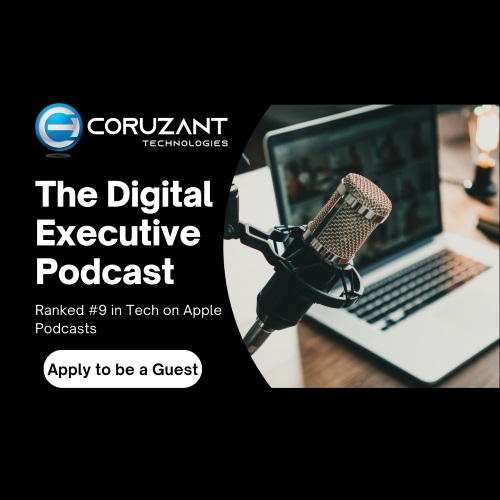In the ever-competitive world of digital marketing, driving traffic to a website is a crucial aspect of a successful strategy. One tool that has garnered significant attention is the traffic bot. These automated programs can generate visits to a website by mimicking human behavior. However, the question of whether traffic bots are legal and safe to use is complex and multifaceted. As an SEO specialist, it’s essential to understand the legal implications and safety concerns associated with traffic bots. This article aims to provide a comprehensive analysis of the legality and safety of using traffic bots while offering practical insights and best practices.
What are Traffic Bots?
Traffic bots are software applications designed to simulate website visits. They can perform a variety of actions, such as navigating through pages, clicking on links, filling out forms, and even watching videos. These bots are used for various purposes, including:
- Boosting Website Traffic: Increasing the number of visits to improve perceived popularity.
- Stress Testing: Testing a website’s ability to handle high-traffic loads.
- Metric Manipulation: Enhancing engagement metrics like click-through rates (CTR) and page views.
The Legal Landscape of Traffic Bots
The legality of traffic bots is a gray area, subject to interpretation and jurisdictional differences. Here, we’ll explore the most pertinent legal considerations surrounding their use.
1. Terms of Service Agreements
Most websites and online platforms, including search engines and social media networks, have terms of service (ToS) agreements that users must adhere to. These agreements often include clauses that prohibit automated activities.
- Example: Google’s ToS expressly forbids the use of automated systems to interact with its services without written permission.
Violating these agreements can result in penalties, such as account suspension or permanent banning from the platform.
2. Fraud and Deceptive Practices
Using traffic bots to manipulate metrics such as page visits and ad clicks can be considered fraudulent. This is particularly relevant in the context of pay-per-click (PPC) advertising, where bots can generate fake clicks, leading to misrepresented ad performance and financial losses for advertisers.
- Example: In 2016, Uber filed a lawsuit against a company that allegedly used traffic bots to generate fake clicks on its ads, resulting in substantial financial losses.
Engaging in such deceptive practices can result in legal actions, hefty fines, and reputational damage.
3. Regulatory Compliance
Various jurisdictions have regulations that govern online activities and digital advertising. For example, the United States Federal Trade Commission (FTC) enforces laws against deceptive advertising practices. Using traffic bots to inflate ad metrics could potentially violate such regulations.
- Example: The FTC has taken action against companies that engaged in deceptive online advertising practices, emphasizing the need for transparency and honesty in digital marketing.
4. Intellectual Property Rights
Traffic bots that scrape content or data from websites without permission can infringe on intellectual property rights. This includes copyright and trademark violations, leading to legal disputes and penalties.
- Example: LinkedIn filed a lawsuit against several companies for using bots to scrape data from its platform, alleging violations of the Computer Fraud and Abuse Act (CFAA).
Safety Concerns of Using Traffic Bots
Apart from legal considerations, the safety of using traffic bots is a significant concern. The following are the primary safety issues associated with their use.
1. Detection and Penalties
Search engines and analytics platforms are continuously improving their ability to detect artificial traffic. When detected, traffic bots can lead to severe penalties, including:
- Search Engine Penalties: Websites caught using traffic bots may be penalized through reduced rankings or complete removal from search engine results.
- Ad Network Bans: Advertising platforms, such as Google Ads, may suspend or ban accounts found using it to manipulate metrics.
- Reputational Damage: Being associated with the use of it can harm your brand’s reputation, leading to a loss of trust from users and clients.
2. Distorted Analytics
It can significantly distort your website’s analytics data, leading to inaccurate insights and misguided decisions. Common issues include:
- Inflated Traffic Metrics: Artificially increased visits can make it challenging to understand genuine user behavior and engagement.
- Skewed Conversion Rates: Bots can affect conversion metrics, making it difficult to assess the effectiveness of your marketing strategies.
- High Bounce Rates: Low-quality bots may generate high bounce rates, indicating poor user engagement.
3. Security Risks
Using poorly configured or malicious traffic bots can introduce security vulnerabilities to your website. Potential risks include:
- Botnet Infections: Some bots are part of larger botnets, networks of compromised computers controlled by malicious actors. Introducing such bots to your site can lead to security breaches.
- Data Theft: Bots programmed to scrape data without proper authorization can result in unauthorized access and data theft.
Best Practices for Using Traffic Bots Responsibly
While traffic bots can offer certain benefits, it is essential to use them responsibly and ethically to avoid legal and safety issues. Here are some best practices:
1. Transparency and Disclosure
Always be transparent with stakeholders about the use of it. Clearly communicate their purpose, benefits, and potential risks. Transparency builds trust and ensures that everyone understands the strategy.
- Example: Inform clients about the use of traffic bots for stress testing the website’s server capacity, explaining that this is a standard practice to ensure site stability.
2. Comply with ToS and Regulations
Ensure that the use of traffic bots complies with the terms of service of the platforms you interact with and relevant legal regulations. Regularly review and update your practices to align with the latest standards.
- Example: Before using traffic bots to interact with Google services, review and comply with Google’s ToS, seeking written permission if necessary.
3. Use High-Quality Bots
Invest in high-quality traffic bots that accurately simulate human behavior and avoid detection. Well-designed bots can mimic complex user interactions, reducing the risk of penalties and ensuring realistic engagement metrics.
- Example: Choose traffic bot tools that offer advanced features such as varied clicking patterns, random site navigation, and dynamic IP rotations to make the traffic appear more authentic.
4. Regular Monitoring and Analysis
Continuously monitor and analyze your website’s traffic to identify and address anomalies. Implement regular data audits to distinguish between bot and genuine traffic, ensuring that your analytics remain accurate.
- Example: Use tools like Google Analytics to track traffic patterns and implement filters to exclude known bot traffic from your reports.
5. Ethical Load Testing
Use traffic bots ethically for legitimate purposes such as load testing. Ensure that the testing does not disrupt actual user experiences or interfere with genuine site interactions.
- Example: Simulate peak traffic scenarios before major product launches to ensure the website can handle high traffic volumes without compromising performance.
Conclusion
The use of traffic bots in digital marketing raises important legal and safety considerations. While they can offer benefits such as boosting website traffic and testing server capacity, their misuse can lead to significant penalties, distorted analytics, and security risks.
As an SEO specialist, I know that it is crucial to navigate the legal landscape responsibly and use traffic bots ethically. Transparency, compliance with terms of service and regulations, investing in high-quality bots, regular monitoring, and ethical usage are essential best practices.
By understanding the legal and safety implications and adhering to responsible practices, you can effectively leverage traffic bots’ https://www.sparktraffic.com/traffic-bot potential while maintaining your website’s integrity and credibility. Prioritizing ethical considerations and transparency will build trust with clients, partners, and stakeholders, ensuring long-term success in the competitive digital landscape.











